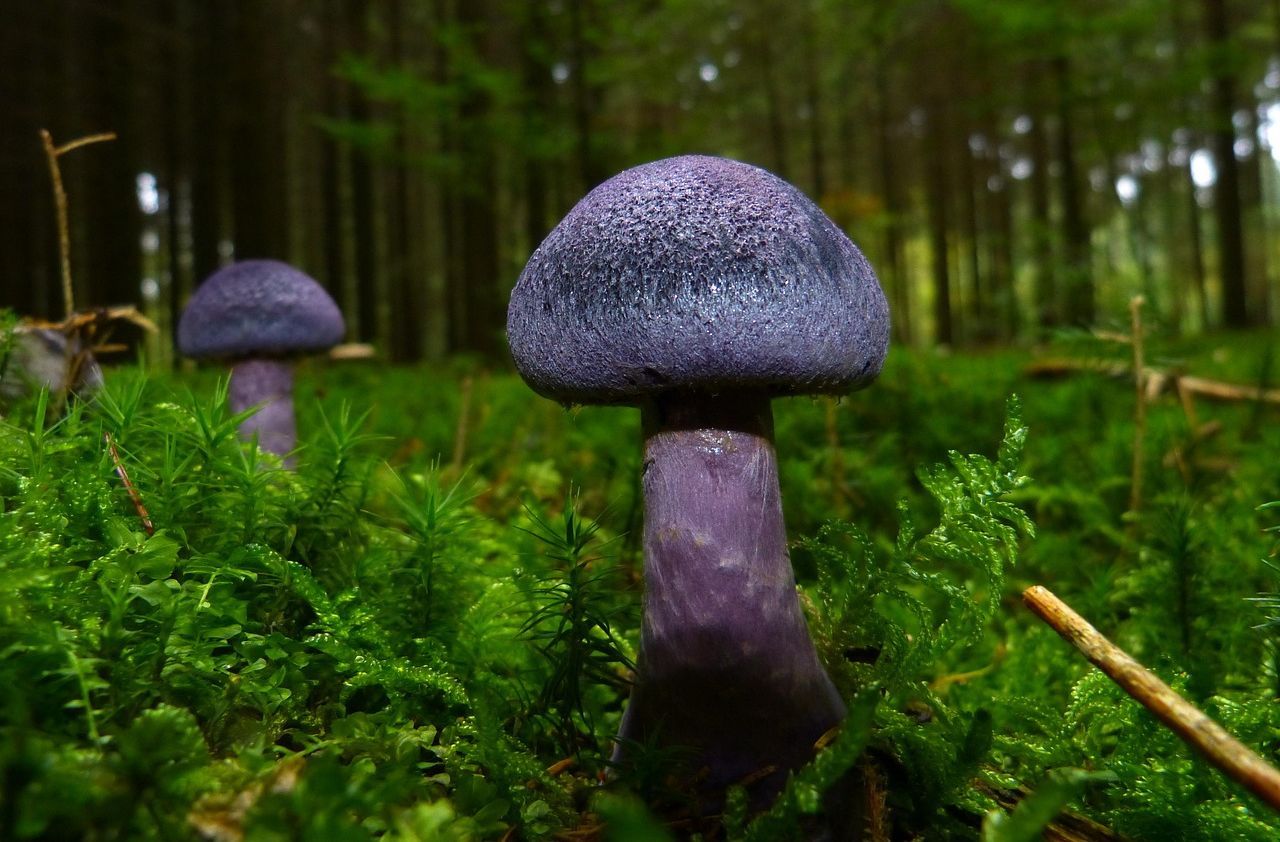Bad picks from the forest
Foragers beware: These 10 mushroom species can kill you!
Published on June 5, 2025
 Credit: LoggaWiggler
Credit: LoggaWiggler
Going mushroom hunting in the woods during the fall or spring can be a fun and rewarding activity. However, it is important to first learn how to differentiate between edible and poisonous fungi. Depending on the species, mushrooms can pose different dangers. Some may cause minor indigestion, while others can be fatal. In this article, we’ll unmask 10 dangerous mushrooms you should stay away from. Do you know which species is responsible for the most mushroom-related fatalities each year?
Fly Agaric (Amanita muscaria)
 Credit: Andriy Nestruiev
Credit: Andriy Nestruiev
When we think of mushrooms, the first image that often comes to mind is a cute little red cap covered in white dots. Amanita muscaria is the classic mushroom found in children's books and is likely the most photographed mushroom in the world. But did you know it can be dangerous?
This mushroom’s colloquial name, fly agaric, probably derives from its traditional use as a fly killer. It has also been used throughout history in religious rites for its hallucinogenic properties. However, the presence of several toxins can produce other effects as well, including nausea, vomiting, and diarrhea. Although it is not the most poisonous of all mushrooms, it’s best not to be seduced by its charming appearance—stay away from it.
Fool’s Webcap (Cortinarius orellanus)
 Credit: mirey2222
Credit: mirey2222
Cortinarius orellanus is a medium-sized mushroom with a cylindrical yellowish stem, an orange-brown cap, saffron-colored gills, and yellowish flesh. Commonly known as the fool’s webcap, it is native to Europe and is typically found in mountain forests. It prefers moist, organic-rich soils and is most prevalent during the summer and fall months.
The fool’s webcap is one of the most poisonous mushrooms known to exist. It contains orellanin, a nephrotoxic compound that can cause severe kidney damage in humans. Symptoms of poisoning—including lower back pain, nausea, vomiting, and diarrhea—can take several days to appear, making diagnosis and treatment especially difficult.
Satan's bolete (Boletus satanas)
 Credit: adege
Credit: adege
This species is considered one of the few toxic members of the Boletus genus. In the areas where it grows—warmer regions of Europe—it is feared for its poisonous effects, which appear shortly after ingestion. Although caution is warranted, it is not a deadly mushroom; however, it can cause dehydration, diarrhea, nausea, and severe abdominal pain.
Despite bearing some resemblance to edible mushrooms, its size often gives it away. Satan’s bolete can reach up to 20 inches in width, and it is not uncommon to find specimens weighing around 4.5 pounds. Its cap is beige, it has a bulbous red stem, its flesh is light yellow and turns blue when cut, and it emits a notably unpleasant odor.
Liberty Cap (Psilocybe semilanceata)
 Credit: Hans
Credit: Hans
Psilocybe semilanceata, commonly known as the liberty cap, is a mushroom known for its psychotropic effects. It grows mainly in humid and temperate areas of the Northern Hemisphere, particularly in Europe. It has a distinctive nipple-shaped cap, and its color ranges from whitish when young to brown as it matures. The mushroom has a bitter taste.
Although the liberty cap is considered to have low toxicity, its ingestion can produce a range of effects, including altered perception of space and time. It may also cause temporary paranoia, with effects typically lasting between 3 and 6 hours. For this reason, its consumption is not recommended outside of a controlled environment.
Destroying Angel (Amanita verna)
 Credit: Erik Karits
Credit: Erik Karits
Eating even a single piece of Amanita virosa can cause irreversible liver damage, and you should be especially careful because it can be easily mistaken for edible white-capped species.
In the eastern United States, the destroying angel appears from early summer to early autumn. It has a white cap that is initially ovoid and later flattens with age. The stalk is slender and covered with fine hairs, and it features a membranous ring. Despite its pleasant smell and reportedly good taste, this mushroom is extremely poisonous—ingesting it can result in death.
False Morel (Gyromitra esculenta)
 Credit: ChristianSW, CC0, via Wikimedia Commons
Credit: ChristianSW, CC0, via Wikimedia Commons
The false morel can be found in spring in coniferous forests. Its cap is brain-like, with intricate wrinkles and folds, and its color ranges from light brown to reddish brown depending on humidity.
Despite its scientific name—Gyromitra esculenta ("esculenta" meaning "edible")—the false morel is highly toxic unless properly prepared. In some individuals, it can be dangerous even after cooking; its toxins are volatile, and poisoning can occur by inhaling the fumes released during boiling. Nevertheless, the false morel remains a popular mushroom in some European countries, such as Finland, where it is used in certain traditional dishes. Would you dare to try it?
Deadly Dapperling (Lepiota brunneoincarnata)
 Credit: PublicDomainPictures
Credit: PublicDomainPictures
Lepiota brunneoincarnata may be tiny in size, but it is unquestionably deadly. It’s important to be able to recognize this mushroom and exercise caution when encountering it in the wild. The good news is that its appearance differs significantly from most edible species, making it less likely to be confused with them.
Commonly known as the deadly dapperling, this mushroom is found throughout Europe and parts of Asia. It typically appears during the summer and autumn months in meadows, parks, gardens, shrublands, and along roadsides. It contains a toxin called amatoxin, which is absorbed through the digestive tract and can cause symptoms such as abdominal pain, gastroenteritis, diarrhea, and vomiting. If not treated promptly, it can lead to death within a week.
Autumn Skullcap (Galerina marginata)
 Credit: Vladimir Srajber
Credit: Vladimir Srajber
Galerina marginata, known colloquially as autumn skullcap, is found in coniferous forests across North America, Europe, Asia, Japan, and Australia. Although it can appear at various times of the year, it is most commonly found in autumn. It has a soft brownish color, and its cap surface is often slimy with a greasy appearance.
Like the deadly dapperling, the autumn skullcap contains amatoxins, which interfere with essential cellular functions. The first symptoms of poisoning appear 6 to 24 hours after ingestion. It can cause renal failure and eventually death if not treated within the first four days.
Livid Pinkgill (Entoloma sinuatum)
 Credit: Hans
Credit: Hans
Entoloma sinuatum is responsible for numerous cases of poisoning, as it can be mistaken for several edible species. At first glance, the body of the livid pinkgill looks like a classic field mushroom—its cap often displays a creamy light gray color. It typically grows in clay and limestone-rich soils, especially in beech and oak forests across Europe and parts of North America.
Although it does not have an unpleasant taste, you shouldn’t eat it. It can cause severe gastrointestinal disorders, including persistent diarrhea and vomiting, which may last for several days, and in some cases, up to two weeks.
Death Cap (Amanita phalloides)
 Credit: adege
Credit: adege
The death cap (Amanita phalloides) accounts for the vast majority of mushroom poisoning deaths worldwide—hence its name. Consuming less than 2 ounces of this mushroom is enough to be fatal; an even smaller dose can kill a child and cause severe poisoning in adults.
Native to the United Kingdom and parts of Ireland, the death cap has rapidly spread over the past century to Australia and North America. It can grow up to 6 inches tall and has a domed cap sometimes tinged yellow or green, along with a white stem, which makes it difficult to distinguish from some edible mushrooms. Even its spores are poisonous. Therefore, if you have handled a death cap, avoid touching your mouth and always wash your hands thoroughly before eating.










